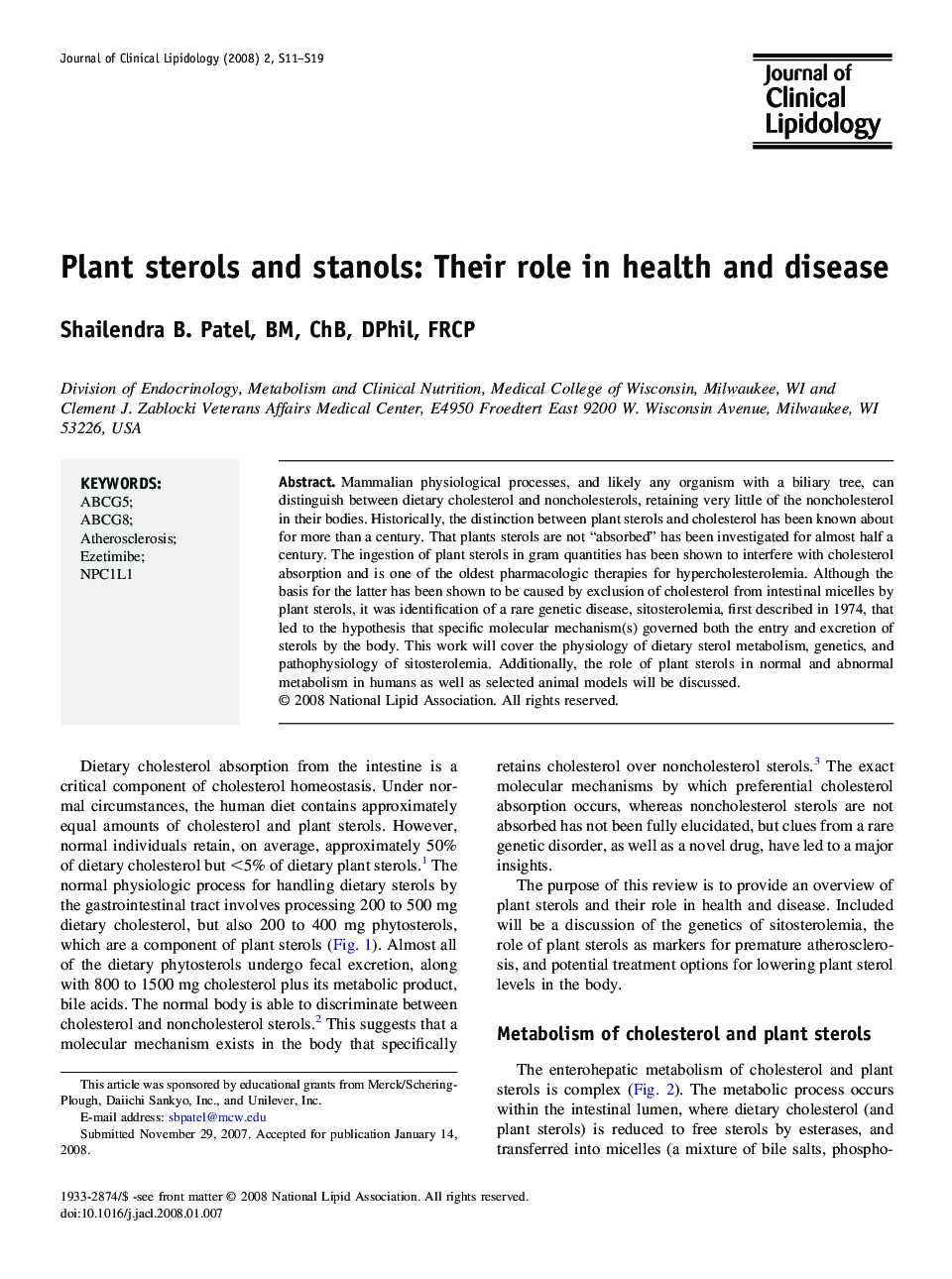| Article ID | Journal | Published Year | Pages | File Type |
|---|---|---|---|---|
| 2966866 | Journal of Clinical Lipidology | 2008 | 9 Pages |
Mammalian physiological processes, and likely any organism with a biliary tree, can distinguish between dietary cholesterol and noncholesterols, retaining very little of the noncholesterol in their bodies. Historically, the distinction between plant sterols and cholesterol has been known about for more than a century. That plants sterols are not “absorbed” has been investigated for almost half a century. The ingestion of plant sterols in gram quantities has been shown to interfere with cholesterol absorption and is one of the oldest pharmacologic therapies for hypercholesterolemia. Although the basis for the latter has been shown to be caused by exclusion of cholesterol from intestinal micelles by plant sterols, it was identification of a rare genetic disease, sitosterolemia, first described in 1974, that led to the hypothesis that specific molecular mechanism(s) governed both the entry and excretion of sterols by the body. This work will cover the physiology of dietary sterol metabolism, genetics, and pathophysiology of sitosterolemia. Additionally, the role of plant sterols in normal and abnormal metabolism in humans as well as selected animal models will be discussed.
